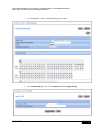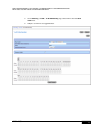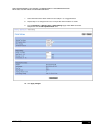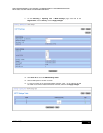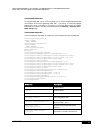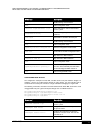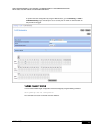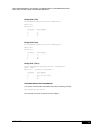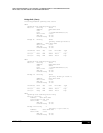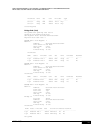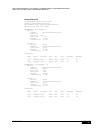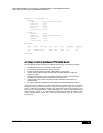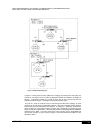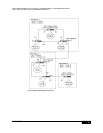
23
APRIL 2008
MSTP INTEROPERABILITY OF THE DELL™ POWERCONNECT™ 6200 SERIES SWITCHES
WITH CISCO IOS AND CISCO CATOS-BASED SWITCHES
###### MST 2 Vlan Mapped: 20
ROOT ID
Address 00:02:00:15:62:10:29:00
Path Cost 20000
Root Port 1/g2
Hello Time 2 Sec
Max Age 20 sec
Forward Delay 15 sec
Bridge ID
Priority 32768
Address 80:02:00:84:00:00:0F:FF
Hello Time 2 Sec
Max Age 20 sec
Forward Delay 15 sec
Interfaces
Name State Prio.Nbr Cost Sts Role PortFast RootPort
------ ----- -------- ----- ---- ----- -------- -------
1/g1 Enabled 128.1 20000 DSC Altn No No
1/g2 Enabled 128.2 20000 FWD Root No No
Dell_BrB#
ADDITIONAL INFORMATION AND SCALABILITY WITH MORE REGIONS
To further illustrate the full connectivity in an MSTP active topology, the following rules apply:
• Each Bridge or LAN is in one and only one MSTP region.
• Every frame is associated with one and only one VID.
• Frames are allocated either to the IST or MSTI within any given region.
• The IST and each MSTI provides full and simple connectivity between all LANs and
bridges in a region.
• All bridges within a region reach a consistent agreement as to which ports interconnect
that region to a different region and label those as boundary ports.
• At the boundary ports, frames allocated to the CIST or MSTIs are forwarded or not
forwarded alike.
• The CIST provides full and simple connectivity between all LANs and bridges in the network.
Frames with VIDs not allocated to an + MSTI will be implicitly assigned to the CIST (or IST within
the region), and they will be processed or passed on through the region. For example, in
Figure 7, VLAN 30 is not explicitly assigned to any instance but by default, it will still rely on the
CIST since the two bridges define a region (MST Region 2). Since the two bridges process
frames internal to Region 2, an MSTI Regional Root Bridge must again be elected. In this
example, Bridge BrA2 is chosen since it has the lowest external root path cost through a
boundary port.




